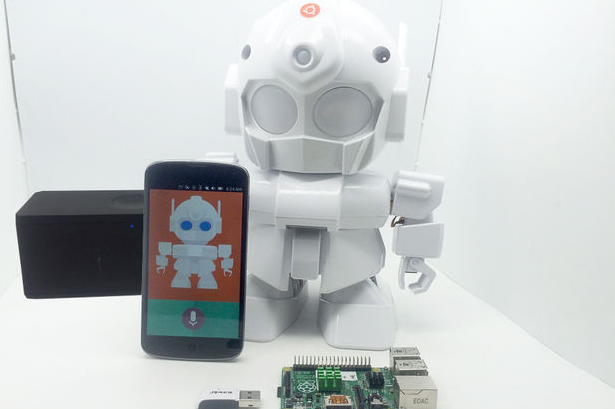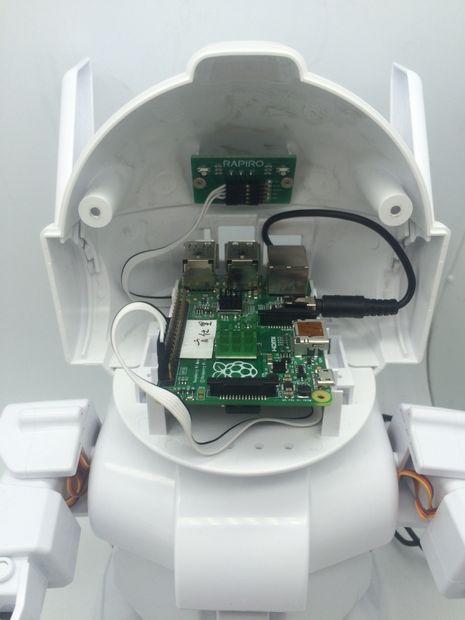Previously, it would have been hard imagining devices like the topic of this article–useful products being printed layer by layer, brought into existence at the desktop, and controlled wirelessly by a phone mostly used for taking pictures, texting, and applications.
It truly wasn’t all that long ago that robots were mainly just a thing out of sci-fi, with a smattering of rudimentary walking and talking electronics being brought into existence here and there by eccentric scientists globbing parts together in a Frankenstein-ish manner.
It used to be a rare and very exciting thing when a child received anything involving robots for a holiday or birthday gift. As technology progresses at rapid speed, however, devices including what were once considered complex electronics and software are becoming much easier to obtain–and to construct yourself. Not only that, but many of us are also learning to tell them what to do, and designing and customizing the controls as well.
 In just a little more than a day, project MrRobot was born. Due to the power of 3D printing, robots and electronic devices can be created with stunning speed these days, usually in combination with Arduino and Raspberry Pi–as was the case with this project. The software and app are the product of the Ubuntu Shenzhen hackathon and they are meant to work with the diminutive, open source Rapiro robot (which, if you do not want to 3D print it yourself, can also be purchased online and assembled easily). Described as “the robot you always wanted as a kid,” the key to the toy is that it is so user-friendly, and those enjoying it do not have to possess a background in programming or engineering to enjoy it.
In just a little more than a day, project MrRobot was born. Due to the power of 3D printing, robots and electronic devices can be created with stunning speed these days, usually in combination with Arduino and Raspberry Pi–as was the case with this project. The software and app are the product of the Ubuntu Shenzhen hackathon and they are meant to work with the diminutive, open source Rapiro robot (which, if you do not want to 3D print it yourself, can also be purchased online and assembled easily). Described as “the robot you always wanted as a kid,” the key to the toy is that it is so user-friendly, and those enjoying it do not have to possess a background in programming or engineering to enjoy it.
Shared with us by creator Joseph Yang, his Instructable allows you to download all the files needed to begin to manipulate the Rapiro with your Ubuntu phone. With the specialized app, you will have voice, touch, and shake control–all which interact with the Rapiro. Indeed though, you will need an Ubuntu phone and app to run MrRobot, and they are available worldwide.
The bill of materials is a little more interesting–and shorter than usual. Here’s what you will need:
- Ubuntu Mobile
- A Raspberry Pi
- WiFi dongle
- Rapiro robot
- Optional music box
- GitHub files for MrRobot
- Ubuntu QT sdk
- Pi with Raspbian
- Arduino IDE (if you wanna build the robot yourself)
- wit.ai API
Once you have your Ubuntu phone, you need the app, which allows you to:
- Use a touchscreen to control the robot
- Detect serval movement like shaking–and trigger the Rapiro to move
- Record audio with voice control button
Then, you will want to install the Ubuntu QT sdk and deploy the code on the phone with the supplied files. After doing so, you’ll need to also complete the following tasks:
- Install a web server on your PI. First, you’ll need to use your wifi dongle to get online. Once there, the code is downloaded and you’ll add a shell command at startup. This is all detailed in the Instructable.
- Perform hardware assembly (this looks incredibly easy) by opening up the head of the Rapiro and attaching your Pi, plugging in the audio wire, and the WiFi dongle.
Subscribe to Our Email Newsletter
Stay up-to-date on all the latest news from the 3D printing industry and receive information and offers from third party vendors.
You May Also Like
Profiling a Construction 3D Printing Pioneer: US Army Corps of Engineers’ Megan Kreiger
The world of construction 3D printing is still so new that the true experts can probably be counted on two hands. Among them is Megan Kreiger, Portfolio Manager of Additive...
US Army Corps of Engineers Taps Lincoln Electric & Eaton for Largest 3D Printed US Civil Works Part
The Soo Locks sit on the US-Canadian border, enabling maritime travel between Lake Superior and Lake Huron, from which ships can reach the rest of the Great Lakes. Crafts carrying...
Construction 3D Printing CEO Reflects on Being Female in Construction
Natalie Wadley, CEO of ChangeMaker3D, could hear the words of her daughter sitting next to her resounding in her head. “Mum, MUM, you’ve won!” Wadley had just won the prestigious...
1Print to Commercialize 3D Printed Coastal Resilience Solutions
1Print, a company that specializes in deploying additive construction (AC) for infrastructure projects, has entered an agreement with the University of Miami (UM) to accelerate commercialization of the SEAHIVE shoreline...































